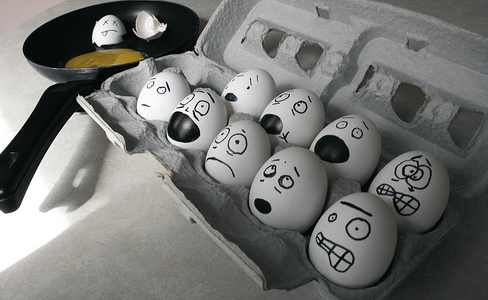Hit the Stress Button!

One thing that learned while at SPIEL17 this year was that I am a stressful person (thank you, Mr. Halper). Let’s pause for a minute to allow the people who know me well to have a good long laugh at this quaint little self-realization of mine.
Alright. Good. Now that that’s out of your systems…
I seriously do not see it from the outside all the time, just as any person, no matter how self-reflective, might not. From the inside I see our team’s ambitious goals, I push (and encourage others to push) passionately forward and I try to regularly check in with the team emotionally and procedurally as we smash through those tough times. And I think, as for setting ambitious goals, pushing passionately and checking in with team members, that I do quite well. The problem is that it appears I also undo all my well-meaning work with one simple habit: the creation of stress.
I honestly mean it when I say: “next time we’ll plan better” or “it’s just this time”. But the truth is unless I – as a leader – am able to adopt a new approach there won’t be a change, there will continually be these routine moments of stress raining down upon my team. And I can’t have that. Because while I might be a stressful person they certainly aren’t (and of course, it’d be nice to learn how to not be one too). This is what I learned thanks to my wonderful team at Quality Beast and special thanks to the terrific and ever-trolling boys – Jordan Draper and Nick Halper – at Dark Flight Games. (Actually, only one of them is a troll; I’ll give you another paragraph’s worth of time to guess who…)
So, how’d I learn this at SPIEL17?
In a previous post I explained a very fierce, last-minute feedback session with Dark Flight regarding our first game, Seize the Bean, in which Jordan, who is a visual learner, had a very hard time playing the game due to the in-progress, prototype graphic design. We can define the game’s iconography at that stage using the words of my business partner and team mate, Josh Wilson: “it’s a bunch of hieroglyphics.” Upon hearing this I was immediately sucked into (or rather, probably created) a heated discussion to discover a solution to the problem and two other wonderfully energetic team mates of mine – the brothers, Joder and Remigi Illi – stayed up all night with me to solve this puzzle (whilst everyone else, completely burnt from the stress of the session, went to bed).
We succeeded in our late-night struggle, providing some nice change suggestions in the morning to our artist and then when speaking with Nick and Jordan (the terrifically tempered and the talented troll, respectively) about it the next morning they urged me to measure my two options: reproduce a new prototype the day before the convention or simply ride with the current one knowing we may get repeat feedback. Whilst I argued that the latter will lose us valuable interest since people sometimes don’t give a game a second chance, they argued that creating more stress for the team was a much worse offense.
It honestly took me a moment at the time, but once I gave it some calm reflection I knew it deep in my soul: Dark Flight was right.
Thus, the stress button was born then and there. From that point on, if we could identify that we were the ones creating the stress through our decisions, then we should hit the proverbial stress button and sound the alarms. In such a moment we should stop what we are doing and regroup as a team to decide on a better process; whether that be a new timeline, deadline, direction or goal. Whatever it takes to not take another step forward on the path of stress creation.
I wanted to actually write this up at or after SPIEL17 but hadn’t carved out the time yet. And today, the topic came up again when our amazing artist and graphic designer, Mario, reached out to me honestly, to say “I can’t achieve what you’ve asked for today”. He was calm in chat but I sensed something else so I called him up and sure enough when I asked him how he felt I was face-to-face with my age-old creation: “I’m stressed” he said.
Boom! Hit that stress button! The alarms went off in my head. Without boring you with the details it should be obvious what we did next: rearranged our plan so as to not put him into a situation where he’d be stressed. Because after all, not only is it (typically) not fun to be stressed it’s also a perfect setup for one’s work to suffer. At Quality Beast we want all of our work to shine at its very best, so stress creation is something we want to make a habit of not doing.
I hope that by writing this publicly two things will happen: 1) that I’ll do better to remember and recognize internally when such a situation is being created by myself or my team, and 2) that those around me will feel more and more free (and obligated) to grab me and hit that stress button so we can immediately pause and rearrange whatever it may be that needs rearranging in that moment.
–
What do you do with your teams, as far as planning and process, in order to avoid the unnecessary creation of stress? How do you see it, once it’s there? And what, if any, practices do you have to help those (like me, perhaps?) who are more prone to stress creation grow and change over time to ease up and yet still produce top quality work?
I’m excited (but not stressed) to hear from you in the comments!
–